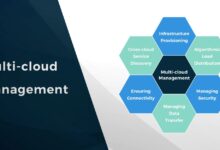Secure Cloud Infrastructure: 7 Essential Strategies for Ultimate Protection
In today’s digital-first world, building a secure cloud infrastructure isn’t optional—it’s essential. With cyber threats evolving rapidly, businesses must prioritize cloud security to protect data, maintain compliance, and ensure uninterrupted operations. Let’s dive into the strategies that make cloud environments truly secure.
Understanding Secure Cloud Infrastructure

A secure cloud infrastructure refers to the foundational architecture and security controls that protect cloud-based systems, data, and services. As organizations migrate from on-premises data centers to cloud platforms like AWS, Microsoft Azure, and Google Cloud, the need for robust security measures becomes paramount. Unlike traditional IT environments, cloud infrastructure is dynamic, scalable, and often managed across multiple geographic regions, which introduces unique security challenges.
What Is Cloud Infrastructure?
Cloud infrastructure consists of hardware (servers, storage, networking equipment) and software (virtualization, operating systems, management tools) that enable cloud computing services. These components are typically owned and operated by cloud service providers (CSPs) but accessed and configured by customers over the internet.
- Compute resources: Virtual machines, containers, serverless functions
- Storage: Object storage, block storage, file systems
- Networking: Virtual private clouds (VPCs), load balancers, firewalls
- Management tools: APIs, dashboards, automation scripts
Understanding these components is the first step in securing them effectively.
Why Security in the Cloud Is Different
Traditional security models rely heavily on perimeter defenses—firewalls, intrusion detection systems, and physical access controls. However, in the cloud, the perimeter is blurred. Resources are accessible over the internet, and users connect from various locations and devices. This shift demands a new approach: zero trust, identity-centric security, and continuous monitoring.
According to the Cisco 2023 Annual Cybersecurity Report, misconfigurations and inadequate identity management are among the top causes of cloud breaches.
The Shared Responsibility Model
One of the most critical concepts in cloud security is the shared responsibility model. It defines how security duties are divided between the cloud provider and the customer. While the provider secures the underlying infrastructure (physical data centers, hardware, hypervisors), the customer is responsible for securing their data, applications, access controls, and network configurations.
“Security in the cloud is a shared responsibility. The cloud provider secures the platform; you secure what you put on it.” — AWS Security Documentation
For example, AWS manages the security of the cloud, while customers manage security in the cloud. Misunderstanding this model often leads to security gaps.
secure cloud infrastructure – Secure cloud infrastructure menjadi aspek penting yang dibahas di sini.
Core Principles of Secure Cloud Infrastructure
Building a secure cloud infrastructure requires adherence to several foundational principles. These principles guide architectural decisions, policy enforcement, and operational practices across all cloud environments.
Principle 1: Defense in Depth
Also known as layered security, defense in depth involves implementing multiple security controls at different levels of the infrastructure. If one layer fails, others remain to prevent or mitigate attacks.
- Network layer: Firewalls, intrusion prevention systems (IPS), DDoS protection
- Host layer: Endpoint protection, secure boot, file integrity monitoring
- Application layer: Input validation, secure coding practices, WAFs
- Data layer: Encryption at rest and in transit, tokenization, data masking
This multi-layered approach ensures that no single point of failure can compromise the entire system.
Principle 2: Least Privilege Access
The principle of least privilege dictates that users and systems should have only the minimum permissions necessary to perform their functions. In cloud environments, this means carefully managing IAM (Identity and Access Management) policies.
For instance, a developer should not have administrative access to production databases. Tools like AWS IAM, Azure AD, and Google Cloud IAM allow granular control over who can do what, when, and where.
A Verizon 2023 Data Breach Investigations Report found that 74% of breaches involved human elements, including misuse of privileges.
Principle 3: Zero Trust Architecture
Zero trust assumes that threats exist both inside and outside the network. Therefore, no user or device is trusted by default, even if they are inside the corporate network. Every access request must be authenticated, authorized, and encrypted.
- Continuous authentication: Multi-factor authentication (MFA), behavioral analytics
- Micro-segmentation: Isolating workloads to limit lateral movement
- Device trust: Ensuring endpoints meet security standards before granting access
Google’s BeyondCorp is a real-world implementation of zero trust, eliminating the concept of a trusted internal network.
secure cloud infrastructure – Secure cloud infrastructure menjadi aspek penting yang dibahas di sini.
Key Components of a Secure Cloud Infrastructure
A robust secure cloud infrastructure is built on several interdependent components. Each plays a critical role in protecting data and systems.
Identity and Access Management (IAM)
IAM is the cornerstone of cloud security. It controls who can access cloud resources and what actions they can perform. Effective IAM includes:
- User provisioning and deprovisioning
- Role-based access control (RBAC)
- Federated identity (e.g., SSO with SAML or OAuth)
- Just-in-time (JIT) access for elevated privileges
Without strong IAM, even the most advanced encryption and firewalls can be bypassed through compromised credentials.
Data Encryption and Key Management
Data must be protected both at rest and in transit. Encryption ensures that even if data is intercepted or stolen, it remains unreadable without the proper keys.
- At rest: Use AES-256 encryption for stored data in databases, object storage, and backups
- In transit: Enforce TLS 1.2 or higher for all communications
- Key management: Use cloud-native services like AWS KMS, Azure Key Vault, or Google Cloud KMS to manage encryption keys securely
Never store encryption keys alongside the data they protect. Rotate keys regularly and enforce strict access policies.
Network Security and Segmentation
Cloud networks must be designed with security in mind. This includes isolating environments, filtering traffic, and monitoring for anomalies.
- Virtual Private Clouds (VPCs): Create isolated network segments for different applications or departments
- Security groups and network ACLs: Control inbound and outbound traffic at the instance and subnet level
- Web Application Firewalls (WAFs): Protect web apps from common attacks like SQL injection and XSS
- DDoS protection: Use services like AWS Shield or Cloudflare to mitigate large-scale attacks
Micro-segmentation further enhances security by applying fine-grained policies between individual workloads.
Best Practices for Building a Secure Cloud Infrastructure
Implementing a secure cloud infrastructure requires more than just technology—it demands disciplined processes and continuous vigilance.
secure cloud infrastructure – Secure cloud infrastructure menjadi aspek penting yang dibahas di sini.
Automate Security Configuration and Compliance
Manual configuration is error-prone and inconsistent. Infrastructure as Code (IaC) tools like Terraform, AWS CloudFormation, and Azure Resource Manager allow you to define and deploy secure configurations programmatically.
- Use policy-as-code tools like HashiCorp Sentinel or AWS Config Rules to enforce security standards
- Scan IaC templates for vulnerabilities before deployment using tools like Checkov or Terrascan
- Automate compliance audits with frameworks like CIS Benchmarks or NIST SP 800-53
Automation reduces human error and ensures consistency across environments.
Implement Continuous Monitoring and Logging
Security doesn’t end at deployment. You must continuously monitor your cloud environment for suspicious activity.
- Enable cloud-native logging services: AWS CloudTrail, Azure Monitor, Google Cloud Audit Logs
- Aggregate logs into a centralized SIEM (Security Information and Event Management) system
- Set up real-time alerts for critical events like unauthorized access or configuration changes
- Use UEBA (User and Entity Behavior Analytics) to detect anomalous behavior
According to a 2023 IBM Cost of a Data Breach Report, organizations with mature security automation reduced breach costs by $1.76 million on average.
Regularly Conduct Security Assessments and Penetration Testing
Even the most secure systems can have hidden vulnerabilities. Regular assessments help identify and remediate risks before attackers do.
- Perform vulnerability scanning on cloud assets using tools like Qualys, Tenable, or AWS Inspector
- Conduct penetration testing to simulate real-world attacks
- Engage third-party auditors for independent validation
- Perform red team exercises to test detection and response capabilities
Many cloud providers require permission for penetration testing, so always follow their guidelines.
Cloud Security Challenges and How to Overcome Them
Despite the benefits of cloud computing, organizations face several persistent security challenges.
Challenge 1: Misconfigurations
Misconfigurations are the leading cause of cloud data breaches. Simple errors like leaving S3 buckets public or disabling logging can expose sensitive data.
secure cloud infrastructure – Secure cloud infrastructure menjadi aspek penting yang dibahas di sini.
- Solution: Implement automated configuration checks and enforce policy compliance
- Use cloud security posture management (CSPM) tools like Palo Alto Prisma Cloud or Wiz
- Train teams on secure configuration best practices
A Gartner report estimates that through 2025, 99% of cloud security failures will be the customer’s fault—mostly due to misconfigurations.
Challenge 2: Shadow IT and Unauthorized Services
Employees often sign up for cloud services without IT approval, creating unmanaged and potentially insecure environments.
- Solution: Implement Cloud Access Security Brokers (CASBs) to discover and control shadow IT
- Establish clear cloud usage policies
- Provide approved alternatives to common shadow IT tools
CASBs like Microsoft Defender for Cloud Apps or Netskope offer visibility and control over cloud app usage.
Challenge 3: Lack of Visibility and Control
In complex multi-cloud or hybrid environments, maintaining visibility across all resources is difficult.
- Solution: Deploy cloud security platforms that provide unified visibility
- Use cloud-native tools like AWS Security Hub or Azure Security Center
- Integrate with third-party tools for enhanced threat intelligence
Centralized dashboards help security teams detect anomalies and respond faster.
Emerging Technologies Enhancing Secure Cloud Infrastructure
As threats evolve, so do the technologies designed to counter them. Several innovations are reshaping how we secure cloud environments.
Confidential Computing
Confidential computing protects data while it’s being processed—in memory—by using hardware-based Trusted Execution Environments (TEEs).
- Intel SGX, AMD SEV, and AWS Nitro Enclaves enable secure processing of sensitive data
- Use cases include secure AI training, financial transactions, and healthcare data analysis
- Even cloud providers cannot access data within these secure enclaves
This technology closes a critical gap: protecting data in use, not just at rest or in transit.
secure cloud infrastructure – Secure cloud infrastructure menjadi aspek penting yang dibahas di sini.
AI-Powered Threat Detection
Artificial intelligence and machine learning are revolutionizing threat detection by analyzing vast amounts of data to identify patterns and anomalies.
- Google Chronicle uses AI to correlate security events across petabytes of log data
- Microsoft Sentinel applies AI to detect insider threats and lateral movement
- AI reduces false positives and accelerates incident response
However, AI models must be trained on clean data and continuously updated to avoid bias and evasion.
Serverless Security and Function-Level Protection
As serverless computing (e.g., AWS Lambda, Azure Functions) grows, so does the need for function-specific security.
- Secure function code with dependency scanning and runtime protection
- Limit permissions using least privilege IAM roles for each function
- Monitor function execution for abnormal behavior or excessive invocations
Traditional server security tools don’t apply here, so new approaches are required.
Compliance and Regulatory Considerations for Secure Cloud Infrastructure
Organizations must comply with various regulations when storing and processing data in the cloud.
GDPR and Data Privacy
The General Data Protection Regulation (GDPR) imposes strict requirements on how personal data is collected, stored, and processed.
- Ensure data residency by choosing cloud regions that comply with local laws
- Implement data minimization and purpose limitation
- Enable data subject rights (access, deletion, portability)
- Conduct Data Protection Impact Assessments (DPIAs)
Cloud providers offer GDPR-compliant services, but the data controller (your organization) remains responsible for compliance.
HIPAA and Healthcare Data
The Health Insurance Portability and Accountability Act (HIPAA) governs the protection of protected health information (PHI).
secure cloud infrastructure – Secure cloud infrastructure menjadi aspek penting yang dibahas di sini.
- Sign a Business Associate Agreement (BAA) with your cloud provider
- Encrypt PHI at rest and in transit
- Implement strict access controls and audit logging
- Regularly conduct risk assessments
AWS, Azure, and Google Cloud all support HIPAA compliance with appropriate configurations.
PCI DSS for Payment Data
The Payment Card Industry Data Security Standard (PCI DSS) applies to any system that handles credit card data.
- Isolate cardholder data environments using network segmentation
- Implement strong access controls and multi-factor authentication
- Regularly test security systems and processes
- Use approved payment gateways to reduce scope
Cloud providers offer PCI-compliant infrastructure, but merchants must validate their own compliance.
Building a Culture of Security in the Cloud
Technology alone cannot ensure a secure cloud infrastructure. People and processes are equally important.
Security Training and Awareness
Employees are often the weakest link in security. Regular training helps reduce human error.
- Conduct phishing simulations and security quizzes
- Teach secure coding practices for developers
- Train operations teams on secure configuration and incident response
Security should be part of onboarding and continuous professional development.
DevSecOps: Integrating Security into Development
DevSecOps embeds security practices into the DevOps lifecycle, ensuring that security is not an afterthought.
- Shift left: Perform security testing early in the development process
- Integrate SAST (Static Application Security Testing) and DAST (Dynamic Application Security Testing) tools
- Automate security gates in CI/CD pipelines
- Use container scanning to detect vulnerabilities in Docker images
Tools like Snyk, Aqua Security, and GitLab SAST help automate security checks.
secure cloud infrastructure – Secure cloud infrastructure menjadi aspek penting yang dibahas di sini.
Incident Response and Disaster Recovery Planning
Even with strong defenses, breaches can occur. A well-prepared incident response plan minimizes damage.
- Define roles and responsibilities for the incident response team
- Establish communication protocols with stakeholders and regulators
- Conduct regular tabletop exercises to test the plan
- Ensure backups are secure, encrypted, and regularly tested
Cloud-native tools like AWS Backup and Azure Site Recovery simplify disaster recovery.
What is a secure cloud infrastructure?
A secure cloud infrastructure is a cloud computing environment designed with robust security controls to protect data, applications, and services from cyber threats. It includes encryption, identity management, network security, and continuous monitoring.
Who is responsible for cloud security?
Security in the cloud follows a shared responsibility model. The cloud provider secures the underlying infrastructure, while the customer is responsible for securing their data, applications, access controls, and configurations.
How can I prevent cloud misconfigurations?
Prevent misconfigurations by using Infrastructure as Code (IaC), automated compliance checks, Cloud Security Posture Management (CSPM) tools, and regular security training for teams.
secure cloud infrastructure – Secure cloud infrastructure menjadi aspek penting yang dibahas di sini.
What are the best tools for securing cloud infrastructure?
Top tools include AWS Security Hub, Azure Security Center, Google Cloud Security Command Center, Wiz, Palo Alto Prisma Cloud, HashiCorp Vault, and SIEM platforms like Splunk or Microsoft Sentinel.
Is zero trust applicable to cloud environments?
Yes, zero trust is highly applicable and recommended for cloud environments. It ensures that every access request is authenticated, authorized, and encrypted, regardless of location, reducing the risk of lateral movement and insider threats.
Building a secure cloud infrastructure is not a one-time project but an ongoing commitment. It requires a combination of strong architecture, automated controls, continuous monitoring, and a security-aware culture. By understanding the shared responsibility model, applying core security principles, and leveraging modern tools and practices, organizations can confidently harness the power of the cloud while minimizing risk. The future of secure cloud infrastructure lies in automation, AI-driven defense, and proactive threat management—staying ahead of attackers requires constant evolution and vigilance.
Recommended for you 👇
Further Reading:









